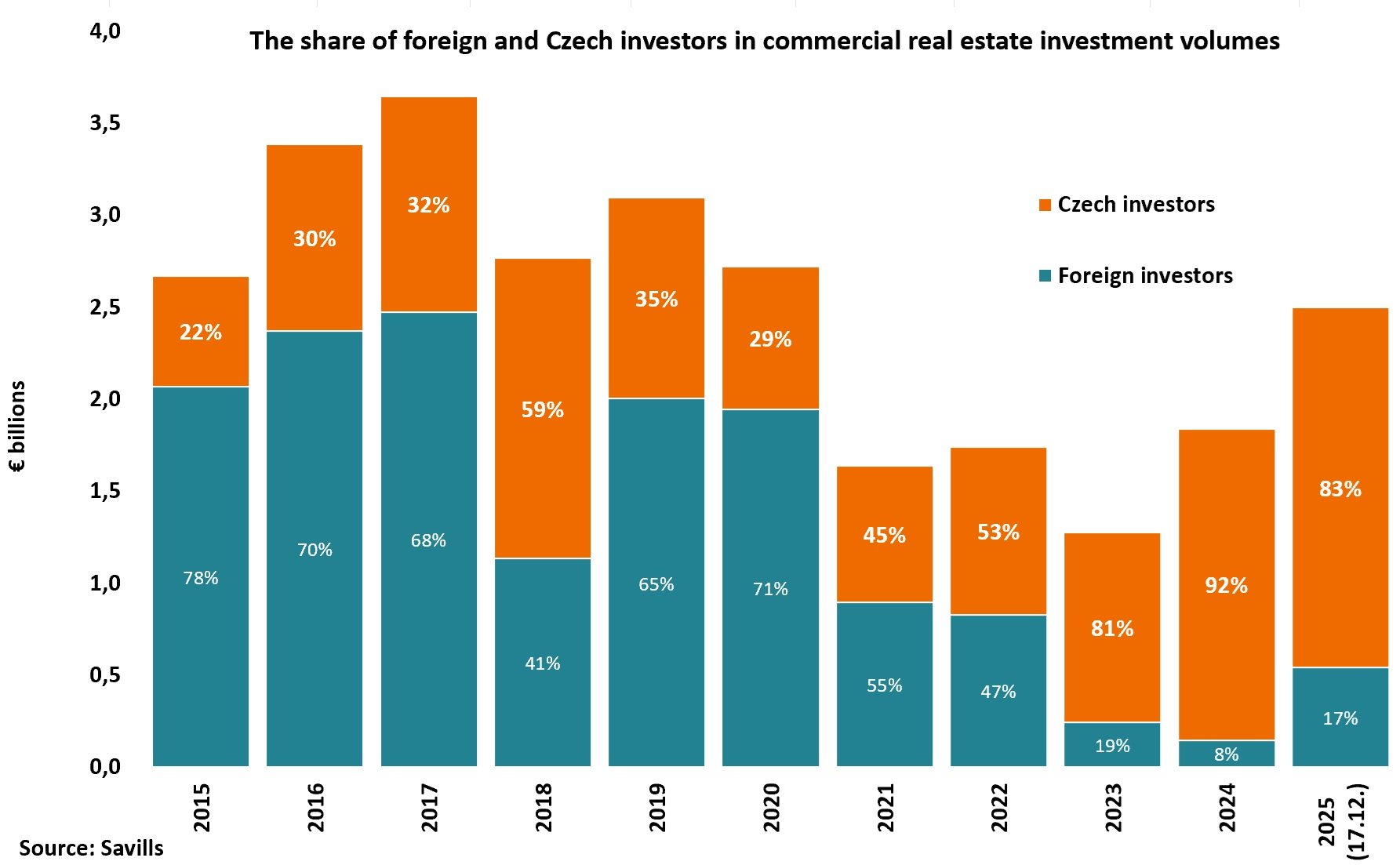Weak construction, pressure on ESG compliance and price imbalances between buyers and sellers are the main trends that will affect the Czech real estate market in 2024. Significant changes will occur in industrial and office properties as well as in residential housing. According to experts from Colliers, the real estate market will face the following challenges this year:
Offices: The gap between ESG-compliant buildings and those that ignore ESG guidance is widening
The EU-wide Non-Financial Reporting Directive, mandatory for an increasing number of companies operating in the Czech market, has led to a growing interest in sustainability, the circular economy and the social impact of business. In the real estate sector, energy and waste management, the environmental impact of projects and the use of building materials are also being monitored more closely. For tenants, environmental certifications of the properties they occupy are also increasingly important. This is beginning to widen the gap between buildings that meet ESG requirements and those that do not. The latter group may soon find that the market has begun to overlook them.
With construction costs remaining high and financing still complicated, we do not expect many, if any, new speculative office developments in 2024. The lack of new leasing opportunities is pushing prices up, and this has resulted in tenants focusing more often on optimising and utilising leased space more efficiently. This trend is also proving beneficial in achieving tenants’ ESG-related objectives. The key to achieving targets is having the right data: the latter can be obtained by leveraging technology and setting internal guidelines tailored to the company’s specific needs.
Industrial: The fight to keep tenants in the Czech Republic
As a result of slow infrastructure development over the past few decades, the Czech industrial real estate market is facing a shortage of available land suitable for industrial development. The market is further complicated by high rents, unmotivated city governments and expensive labour. The main challenge in 2024 will be to keep key tenants and large employers in the country and not lose them to more aggressive markets in Poland or Hungary. With contracts from stronger, prior economic periods expiring within two years, responsible occupants should initiate the first round of negotiations to secure necessary rental terms and avoid situations where they are disadvantaged and have no alternatives.
Things are also complicated by the fact that some parts of the modern industrial market are ageing and will soon need to be modernised or completely refurbished. As with offices, tenants of manufacturing and warehouse buildings must comply with ESG policies. This can mean anything from lighting and HVAC (heating, ventilation and air conditioning) to adding additional insulation or an entirely new exterior covering. However, implementing these upgrades or renovations could be difficult due to minimal vacancies in the Czech market.
Retail: Prague to retain its place among Europe’s top shopping destinations
With the pandemic years behind us and Europe’s economic situation finally improving after several difficult years, retail brands are working tirelessly to improve their market position, name recognition and population coverage. This trend was already evident in 2023, but the main wave of expansion should come during 2024. Thanks to this wave of expansion, Prague’s city centre will retain its place among Europe’s most renowned shopping destinations, as will projects such as 100Yards, NR7, the first phase of Savarin or Palác Hybernia. As Prague is already well saturated with shopping centres, developers’ current interest is to focus on the construction of multifunctional buildings in prime locations. Retail parks will also emerge; especially in areas where shopping options are scarce or not concentrated in one place.
Investment: there will be demand for quality products, but investors are cautious
Although prime equity yields have moved up 125 basis points over the past 18 months to 5.00-5.25 percent, we believe they could rise by as much as another 50 basis points to help bridge the price gap and attract more investors to commit capital. Still, the outlook for 2024 is rather pessimistic in terms of deal volume and similar to that of 2023. We saw more activity at the value-added and opportunistic end of the market during 2023 as investors chased opportunities that could deliver higher returns. However, as prices stabilise during 2024, we expect to see more instances of transactions in core products. However, the price disparity between buyers and sellers will continue to persist. Colliers expect the price gap to narrow in the second half of this year as more owners look to recycle proceeds and trade buildings.
Residential: Mortgage volumes to rise again and housing prices with them
The mortgage market is likely to grow again this year after a sharp year-on-year decline in volume. However, given the persistent housing shortage, prices in the primary housing market can be expected to remain stable or even rise in some locations.
Rents can also be expected to rise further. In previous years, high-interest rates and strict mortgage rules made mortgages unaffordable for the majority of the Czech population. That led to a growing interest in rental housing and a related increase in rental prices. As the institutional PRS is still in its infancy in the country, these changes are expected to continue.







